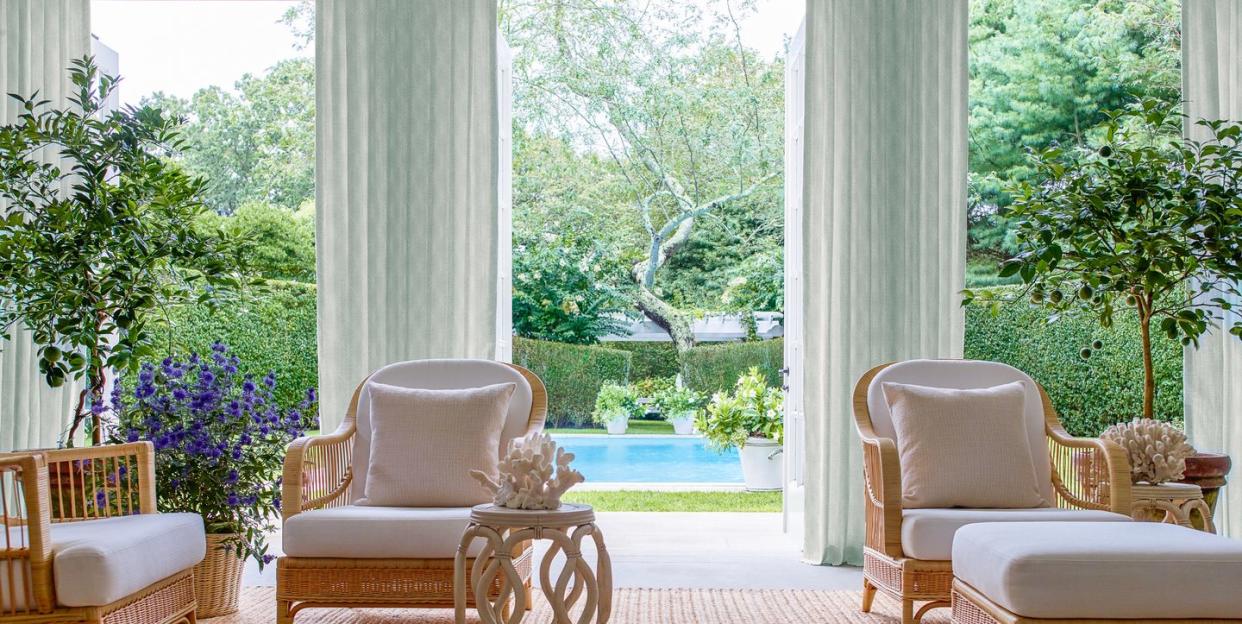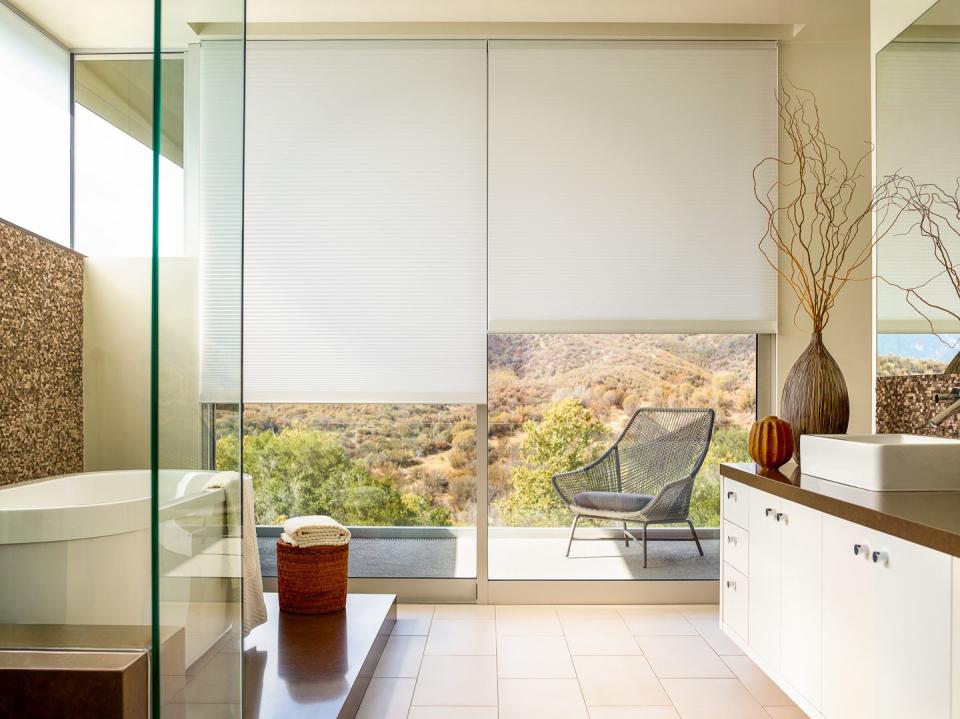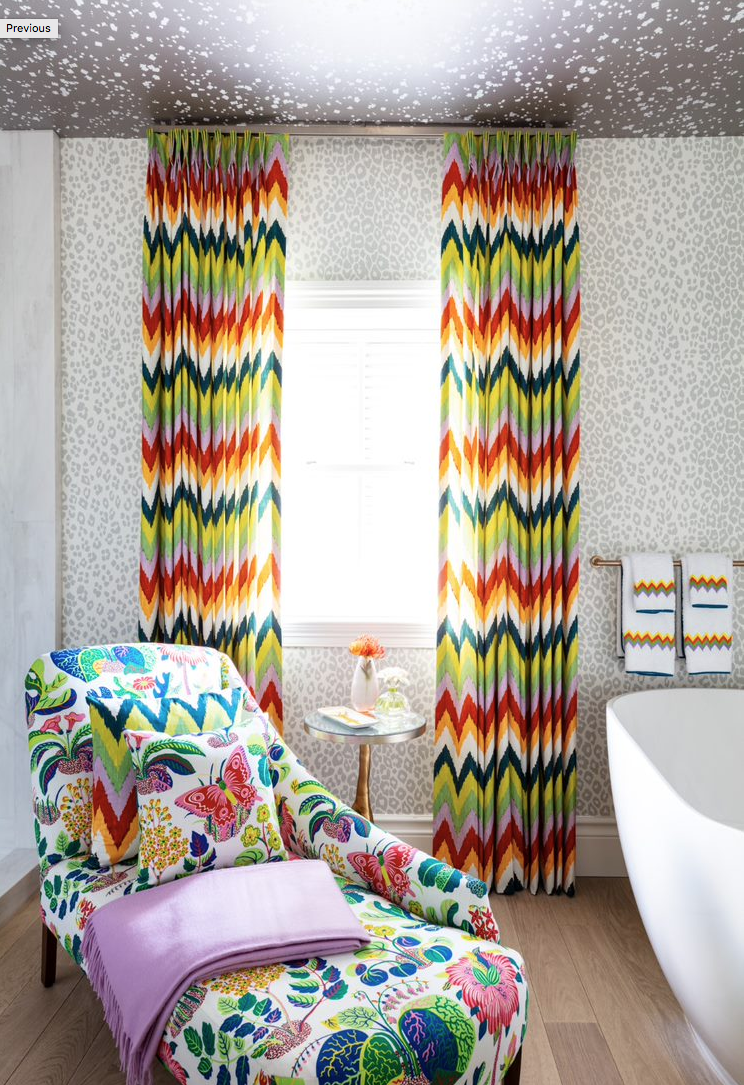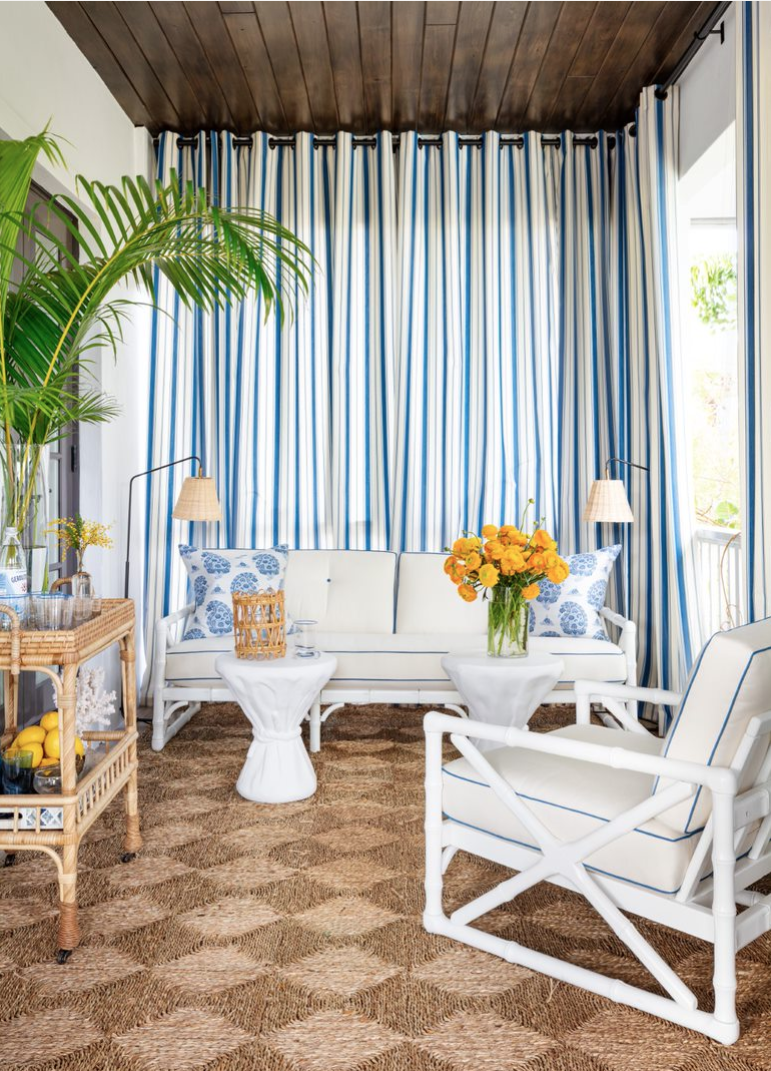Designers Reveal How to Pick the Right Window Treatment for Your Room

Ever since I moved apartments three weeks ago, the first thing anyone asks when they see me is "how's the new place?" And lately, my response has been the same: "It's all done—except the window treatments!" That's because, though they serve an important purpose and can often take up some of the most real estate of anything in a room, window treatments can be tough to navigate. There are just so many options—do I go with curtains? Blackout or sheer? Roller shades? Blinds? Dare I say...Roman shades? Plus, given that they can be an investment piece, you don't want to settle on the wrong one.
To help you be better informed than I was for your next move (or redesign, renovation, or simple refresh), I tapped the experts at The Shade Store, a designer go-to for window trimmings of all kinds, to give us the rundown. I also asked a few trusted designers how they use them themselves. Read on to hear what they had to say.
Don't put it off
Adam Skalman, The Shade Store's VP of sales, says the biggest mistake people make in the process is procrastinating. "I would encourage everyone to get started choosing window treatments early in the interior decorating process," he advises. "Planning ahead will ultimately make your space feel more carefully curated, with room left in the budget for finishing touches."
Designer Kevin Isbell agrees. "More often times than not we start with the window treatment and work around them, as they do become the focal point," he reveals.

Select your product
Skalman has sold pretty much every type of window treatment under (or , rather, blocking) the sun. The first thing he has to say about any type of treatment: "They should be an investment." And, as part of that, "they should be custom to your space." Instead of snagging the least offensive option from Amazon, take the time to think about how you want light to filter into your space, then work with that.
"I would start with the product type first," Skalman advises (see below for a full rundown of the options). "Once I’ve decided on the product type, I would move on to materials and patterns."

Know your material
It's important to consider what type of material is best for what application. For example, some sheers may filter light nicely, but they won't hold up to wear in, say, a kids' room. "Knowing how a fabric will drape, whether it will stretch out over time and how it is going to look with different types of light coming through are all important technical aspects that will affect how the window treatment will look once installed," says designer Alizee Brion.
Skalman advises you to work with a professional, like The Shade Store's Design Consultants, to determine what works best. "People try to do it all themselves. I really believe you need professionals to help guide you through the window treatment process, especially with measurement and installation," he says. "You’re going to live with your window treatments for a long time, so you should get something that’s made very well—and just for you."

Get the right fit
"The custom fit of any window treatment is critical," says Brizon. Not only does a well-fitted window treatment make a room look polished, it can also improve less than polished rooms. "Properly scaled window treatments can enhance a room and hide a multitude of sins," says designer Kevin Isbell. "Less than desirable ceiling height? Hang the drapery as near to the crown molding as possible so the eye is drawn up. Widows not wide enough? Have the window treatment stack a bit wider on each side so the eye perceives a lager window beyond what is actually shown." Robin Gannon agrees: "We tend to use window treatments to correct a lot of interior architecture," she says.

Master these terms
Finally, we asked Skalman to break down the different types of treatments on the market—what they are, what they do, and how to use them.
Roller Shades "have a minimalist look and feel, and are available in light-filtering and blackout styles to control light and privacy," says Skalman. As you may have guessed, they open and close by rolling over a central dowel, meaning they lay flat when open. "They’re a great way to showcase beautiful textures and patterns," Skalman says.
Roman Shades "blend the softness of drapery with the functionality of shades," says Skalman. "There are numerous styles, each crafted to control light and frame your windows in their own unique way." These shades fold up into themselves to open, usually via a chain pull.
Pleated Shades "are exactly what they sound like — a series of expanding pleats," says Skalman. "They have a crisp, clean look and help to control light and privacy within your space."

Honeycomb, or Cellular Shades "have a clean and simple look similar to pleated," Skalman says. They get their name from the expanding "cells," which look like honeycomb from the side. Not only are they available in light-filtering and blackout options Skalman says, but they also can help provide insulation.
Solar Shades "are designed with varying transparencies to not only provide light control and privacy, but also to help protect your interior from harmful UV rays and fading," says Skalman.
Blinds are any options that feature "adjustable slats to control light and privacy in your space," says Skalman.
Blackout shades filter all light, perfect for light sleepers who like to drift off in total darkness.
Drapery is an umbrella term for any window treatment that hangs over or alongside the windows. Below are some common types:

Ripple Fold Drapery has no pleat, and instead "features simple, elegant waves that cascade gracefully."
Tailored Pleat Drapery "is a classic design," Skalman says. It's characterized by "repeating sewn folds at the top."
Pinch Pleat Drapery features pleats sewn at just the top, giving fabric the look of being pinched from the end (the image at the top of this story shows an Aerin fabric by The Shade Store in pinch pleat). Designer Betsy Wentz is a fan: "When it comes to window treatments, I like to keep it simple and let the fabric shine," she says. "A full set of drapery panels can literally transform a space."
Grommet Drapery has metal rings within the fabric which the curtain rod runs through.
Inverted Pleat Drapery is "creatively designed to hide top-stitching," Skalman says, giving it a "crisp, clean appearance."
Goblet Drapery is a more ornate style. "If you look closely at the top, you’ll see handcrafted pleats that look just like classic goblets," Skalman says.
Cubicle Drapery features small grommets or holes for hooks that hang from a track. "This is a budget-conscious option," says Skalman.
Rod Pocket Drapery features a top "pocket" with openings at both ends for the rod. The curtain fabric spreads across the rod when shut and "gathers beautifully when opened," says Skalman.
Sheer Drapery "is a semi-transparent style that lets soft light filter into your space," Skalman explains. "It looks great alone, but we suggest layering it with solids or patterns for added depth."

Follow House Beautiful on Instagram.
You Might Also Like

